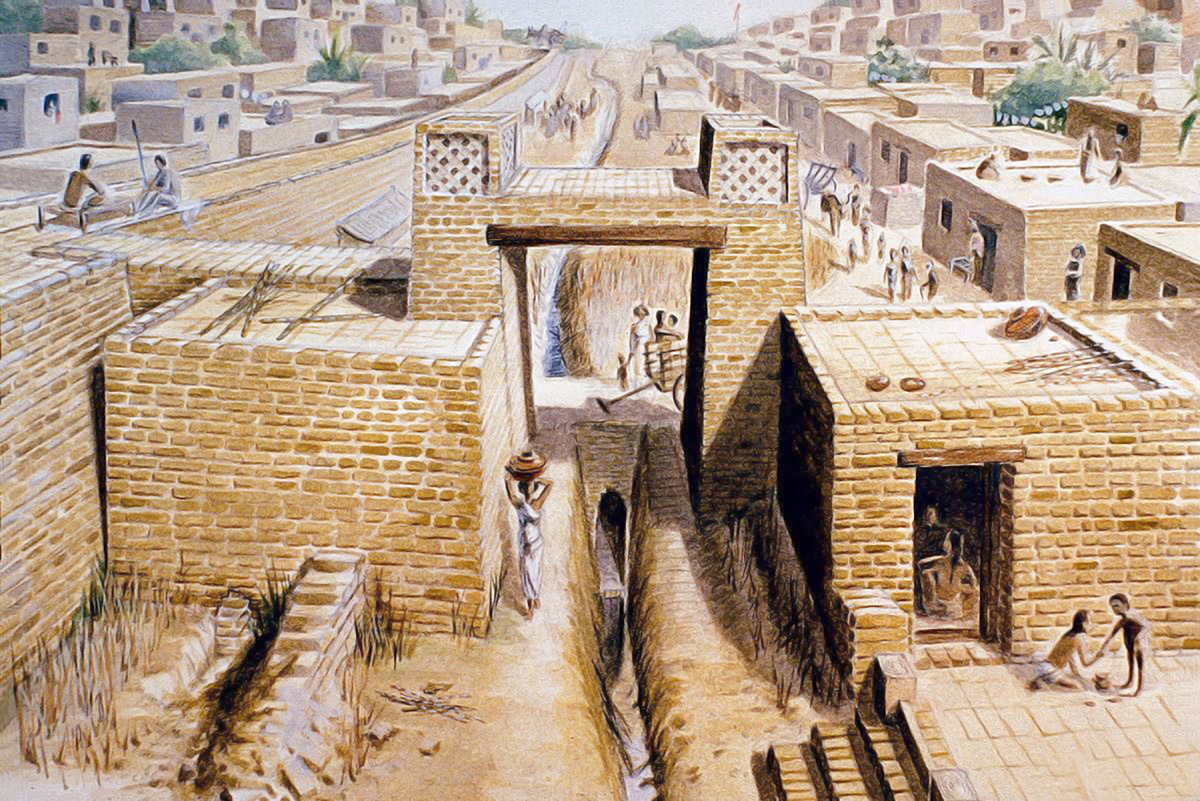A GLIMPSE INTO AN ADVANCED ANCIENT SOCIETY
INTERACTION TEAM
Harappa is a famous archaeological site located in Punjab, Pakistan, approximately 24 km west of Sahiwal. It’s renowned for being the central hub of the Bronze Age Harappan civilization, which is commonly referred to as the Indus Valley Civilization. This civilization spanned a vast region, encompassing areas from Indian Gujarat in the south to Sindh, Rajasthan, Punjab, and Haryana. Remarkably, its influence extended as far east as Uttar Pradesh and as far west as Sutkagen-dor on the Makran coast of Balochistan, near Iran.
The ancient city of Harappa was once a bustling metropolis, featuring a fortified Bronze Age cityscape. During its peak in the Mature Harappan phase (2600 BC-1900 BC), it boasted a population estimated at around 23,500 residents, covering about 150 hectares of land with clay brick houses. This was considered quite large for its time, and it’s the reason why the entire civilization is often named after this site.
Unfortunately, over the years, Harappa suffered significant damage under British and French rule when bricks from its ruins were repurposed for the construction of the Lahore-Multan Railway. Today, the modern village of Harappa is located less than 1 km from the ancient site, with a relatively small population of around 15,000 people.
In terms of historical development, the Harappan Civilization has its roots in cultures like Mehrgarh, dating back to around 6000 BC. The two major urban centers of Mohenjo-daro and Harappa emerged around 2600 BC in the Indus River valley in Punjab and Sindh. This civilization exhibited advanced features, including a possible writing system, well-planned urban centers, advanced drainage systems, and a diverse social and economic structure. Mohenjo-daro in Sindh and Harappa in west Punjab were pivotal in the rediscovery of this civilization in the 1920s.
According to Kris, H.K. (1995), a renowned archaeologist, The Harappan society relied on surplus agricultural production and extensive trade, conducting commerce with regions like Elam and Sumer in southern Mesopotamia. Both Mohenjo-daro and Harappa shared characteristics like differentiated living quarters, flat-roofed brick houses, and fortified administrative or religious centers. However, the urban layouts of these two cities had their unique arrangements.
The Indus Valley Civilization boasted standardized weights and measures and used distinctive seals, possibly for property identification and goods shipment. They utilized copper and bronze, iron was not yet in use. Agriculture thrived with the cultivation of crops like cotton, wheat, rice, and various fruits and vegetables. The civilization also domesticated animals, including the humped bull, and engaged in activities like fowl fighting. Wheel-made pottery adorned with animal and geometric designs was widespread.
Despite their impressive achievements, according to Schug, R. et al. (2013), Harappan society was not entirely peaceful, as evidenced by a high rate of skeletal injuries and signs of battle-related injuries on some skeletons. Leprosy and tuberculosis were present, and the prevalence of disease and trauma increased over time, contributing to the decline of the civilization.
In terms of trade, the Harappans had extensive trade routes along the Indus River, reaching as far as the Persian Gulf, Mesopotamia, and Egypt. Some valuable commodities traded including carnelian and lapis lazuli (precious stones).
Archaeologically, Harappa’s occupation can be divided into several phases, starting with the Ravi aspect of the Hakra phase around 3300 2800 BC, followed by the Kot Dijian (Early Harappan) phase from 2800 2600 BC. The Harappan Phase, from around 2600 1900 BC, marked the height of the civilization, covering an area of 150 hectares. This was followed by a Transitional Phase (c. 1900 1800 BC) and the Late Harappan Phase (c. 1800 1300 BC).
One of the most intriguing findings at Harappa is the steatite seals with engravings of human or animal motifs, some bearing pictographic inscriptions that remain undeciphered. These seals have led to debates about their writing system and linguistic origins. There have been claims of connections to Dravidian languages (a family of languages spoken in southern India and Sri Lanka), but these remain uncertain.
Harappa’s significance extends to its trade connections with ancient Mesopotamia, especially Elam, as well as its trading ties with southern India for gold and copper. Archaeological discoveries continue to shed light on this ancient civilization, revealing its complexity and enigma.
In short, Harappa is a remarkable archaeological site that provides valuable insights into the Indus Valley Civilization, an advanced society with a rich cultural and economic legacy, albeit one that faced challenges and eventual decline. Its significance lies not only in its historical importance but also in the mysteries it continues to unravel.







